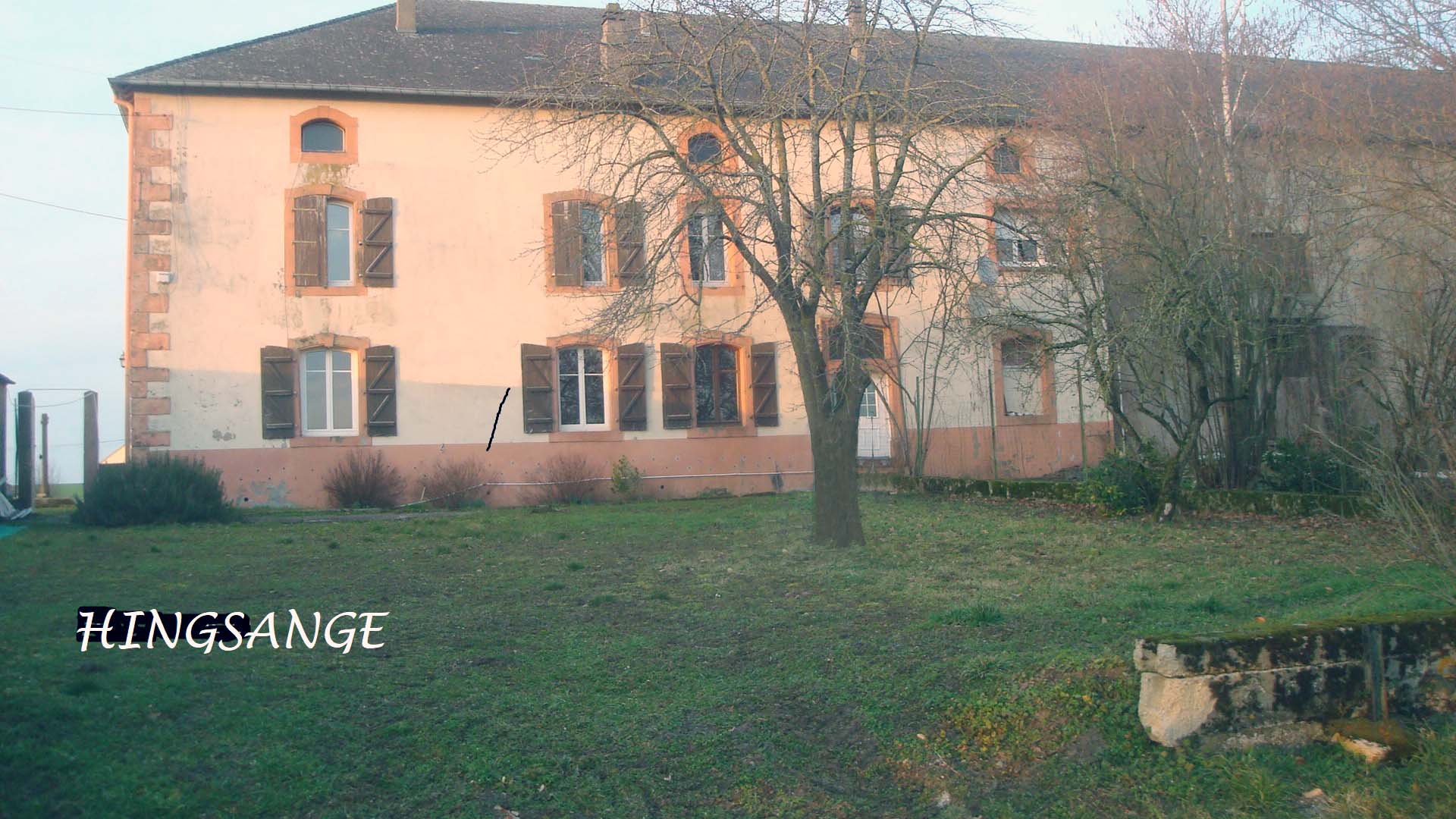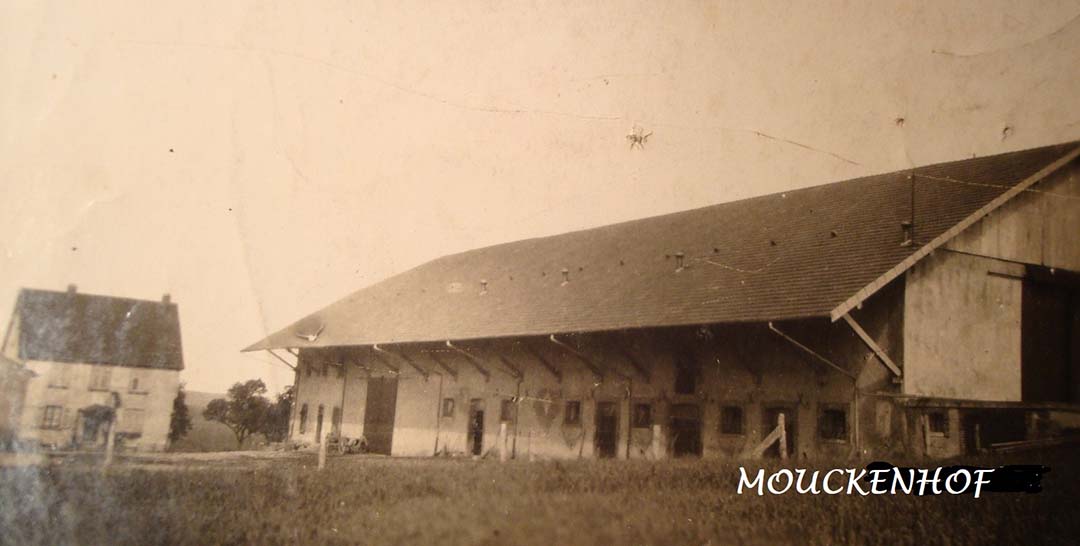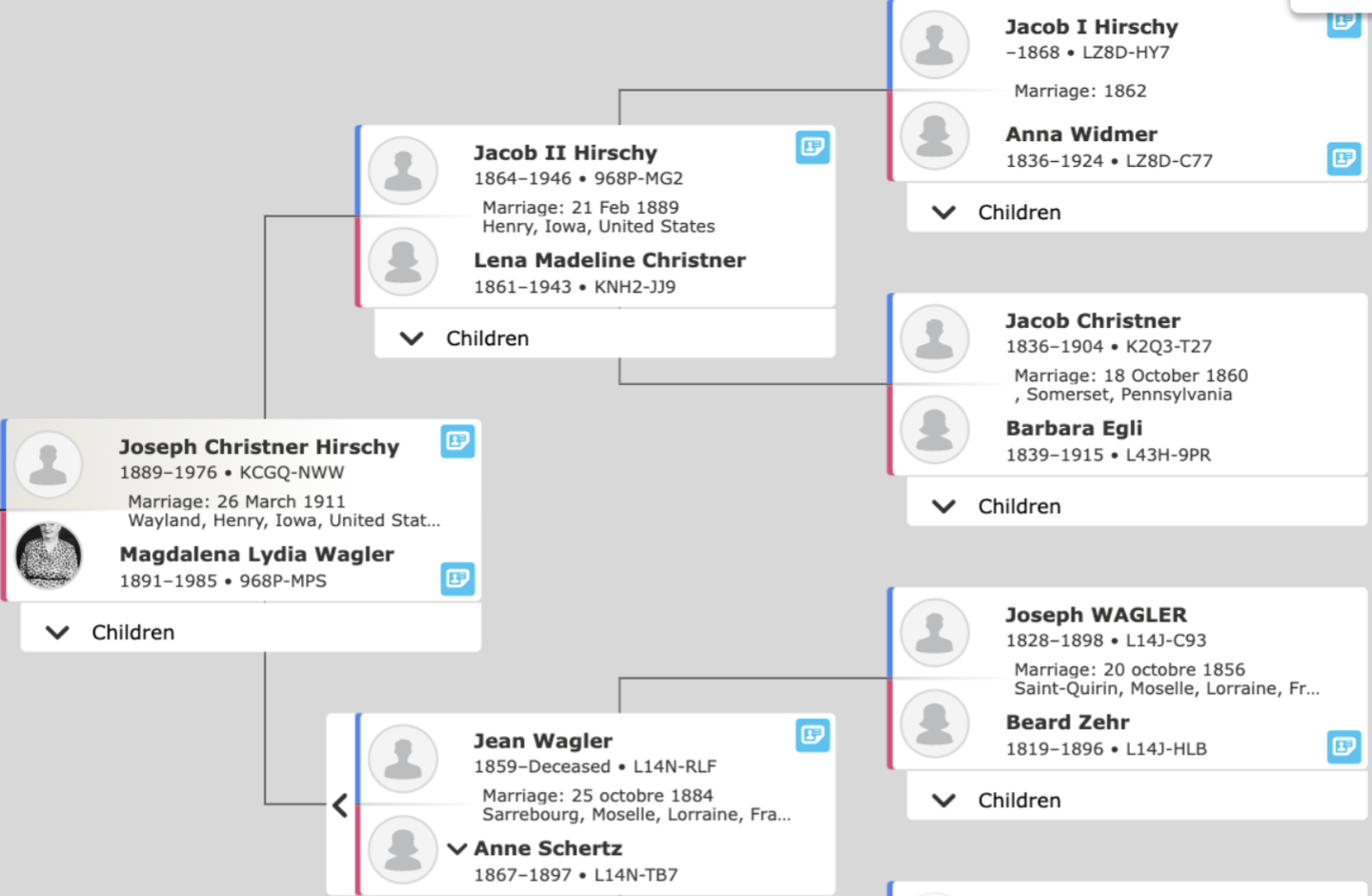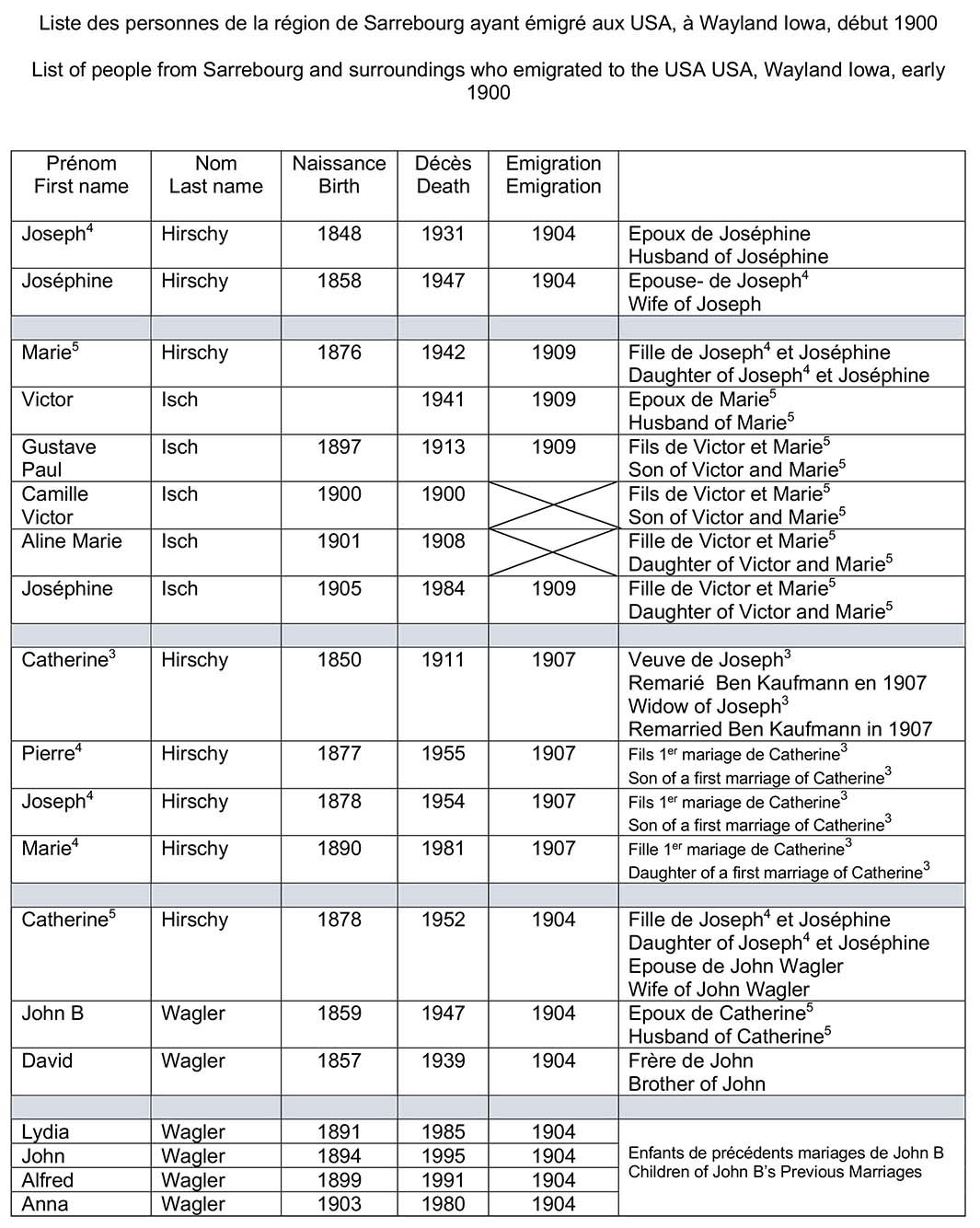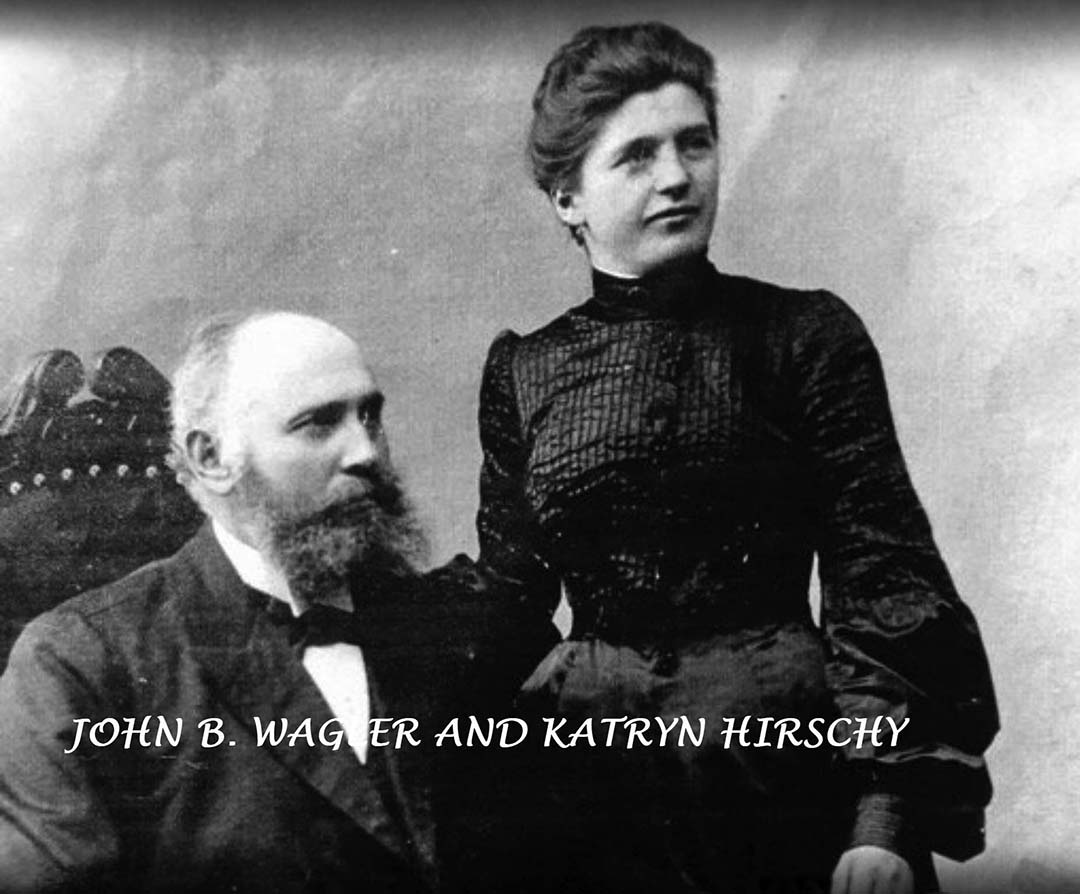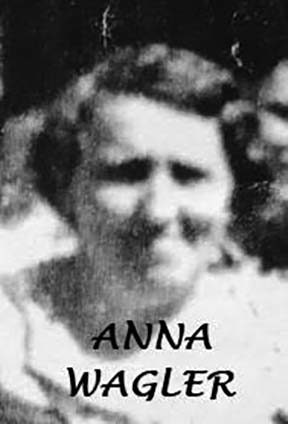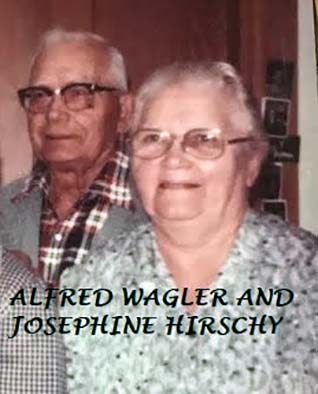Untangling the Saga of Several Hirschy Families
From Alsace-Lorraine to Wayland, Iowa
Jean-Paul Pelsy lives in Saarebourg, France, in the house bought by his grandfather from the builder, Joseph Schertz, with his wife Marguerite Stalder Pelsy. He spent two years in Chad as a volunteer with the Mennonite Mission of France and has served at several levels of the Mennonite churches in France. Jean-Paul has also written a number of histories about local French Mennonite communities and cemeteries.
Note: The superscript numbers used in this article reveal to which generation the person belongs.
To fully understand the history of several Anabaptist Hirschy families of Alsace-Lorraine, a few preliminary considerations are useful.
The Hirschy name originally shows up in Switzerland. The reason they came to settle in Alsace- Lorraine is directly related to the persecution against Anabaptists in Switzerland during the 17th and 18th centuries. This persecution took different forms. Sometimes Anabaptist men were taken from their families and thrown into prison. Other times they were expelled from the country. Only a few were able to sell their goods at low prices before leaving. Those who were deported or who fled often sought refuge in Germany, France and the Netherlands.
The region commonly known as Alsace-Lorraine is located north of Switzerland. Because of many wars between France and Germany and the treaties that followed, this region was sometimes annexed to France, sometimes to Germany. Thus, at the end of the 19th century and at the beginning of the 20th century, Alsace-Lorraine was part of Germany. But after the First World War in 1918 it was again attached to France. Because a Germanic dialect like the language spoken in Switzerland had been spoken there for centuries made Swiss emigrants feel less foreign.
Several Hirschy families settled in Alsace-Lorraine around 1700. A few families settled near the Swiss border in a region called Sundgau, especially in the hamlet of Birkenhof. In this hamlet there is a Mennonite family cemetery where many Hirschy are buried, including Jacob1 (b. 1868).
Other Hirschy families have pushed more than 200km further north into Lorraine, near the towns of Morhange and Sarrebourg. We will see later that Hirschys who settled in Wayland have a link with both those of Birkenhof and Sarrebourg. In this article I am mainly interested in those of Lorraine, but at the end of this story circumstances led me to take a small foray into the Sundgau region.
My story thus spreads from Hirschy arrivals in Lorraine around 1700 until the death of the last person bearing the Hirschy name in Lorraine in 1912: Pierre3 Hirschy, the grandfather of Catherine1 (or Katryn), the third wife of Jean B. Wagler. Pierre3 was the fifth generation established in our region. This story is my story and comes directly to the families who emigrated to Wayland, Iowa, in the USA. The reasons why the name Hirschy died out in Lorraine are many: the most important being the emigration to the USA and the fact that in some families there was no male descendant able to alone ensure the continuity of the name. These phenomena did not occur with the same intensity in the Sundgau where many Hirschy families still live.
To our knowledge, three Hirschy families from Switzerland settled early in 1700 in the northeast of Lorraine. It is not clear whether these families were related. However, they were all Anabaptist. In my account, I limit myself to the lineage with which many are related, and which has been the most numerous, the most entrepreneurial from a professional point of view, as well as being very committed in the ecclesial field. This line is divided into two: on the one hand, those who are the descendants of Joseph1 who remained in the region of Morhange, and on the other hand those who are the descendants of Jean1 who migrated about sixty kilometers further east, into the region of Sarrebourg.
Joseph Hirschy1 settled on the Hingsange farm near Grostenquin. He was an elder in the Mennonite assembly of Morhange. His grandson Joseph Hirschy3 also lived in Hingsange and was also an elder in this assembly and the initiator of the construction of the first small Mennonite church in the region.
The line of the “Joseph” of Morhange died out in Lorraine about fifty years before that of the “Jean” of Sarrebourg. Interesting information about the Hirschy families in general, and especially those from Morhange who emigrated to the USA, can be found at https://tcghs.org/research-guides/amish-mennonites-in-tazewell-county/ Appendix and from page 70. There is very little on the line of “Jean”
Focusing now on the lineage of “Jean” of Sarrebourg, we find that for three successive generations the eldest of the boys was named Jean. So, there was Jean1, 2 and 3. Jean1 settled at the Sarrelfing farm around 1770, about five kilometers from Sarrebourg. For his part, he was an elder of the Mennonite assembly of Sarrebourg. Like Joseph1 he was very much involved in the debates about sending a delegation of Mennonite officials to Napoleon I, requesting exemption from military service. His son Jean2 succeeded him to the Sarrefing farm which he had left in 1843 to settle, still as a tenant, at the farm Mouckenhof, about three kilometers from Sarrebourg. His younger son, Joseph3, took over Mouckenhof farm.
Jean3 married Barbe Verckler and bought the Gosselming mill where the couple settled. Pierre3 married Marie Schertz of Schneckenbusch, where they settled with Marie’s parents. Pierre3 was mayor of the village for twenty-six years and an elder of the Mennonite assembly of Sarrebourg until his death in 1912.
Two cousins, named Joseph and André Pelsy, married two cousins, both named Barbe (or Barbara) Hirschy. One is a daughter of Jean3. The other is one of the daughters of Pierre3. Barbe, daughter of Jean3 married Joseph Pelsy, son of Christian, and is the mother of Valentin, Paul and Valentine of Gosselming, thus Paul is my ancestor. While Barbe, daughter of Pierre3 married André Pelsy, son of Jacob, is the mother of Peter, Valentin, and Valentine of Schneckenbusch. André Pelsy suffered a tragic fate. During a heavy artillery battle of WWI in Schneckenbusch and surrounding villages, the population took refuge in the church. At one point André Pelsy climbed into the bell tower to inspect the surroundings. It was at this time a shell fell on the bell tower and André was killed instantly. It was August 2, 1914.
Jean3 and Pierre3 were both sons of Jean2. They still had a brother, Joseph3, and a sister Catherine3.
In the rest of this story, we will focus on the lineages of Catherine3 and Pierre3.
There is no evidence that any relationship existed between the Hirschy families of Sundgau and those of Lorraine, nor is there is any evidence they were related. Knowing that more than two hundred kilometers separated Catherine and Jacob at a time when movement was on foot or on horseback, yet Catherine3 married Jacob Hirschy in 1857 in Birkenhof. There are no specifics for the reasons, and under what circumstances the marriage was carried out. In 1858, their daughter Josephine was born. In 1861 Catherine3 died. The next year,1862, Jacob remarried to Anna Marie Widmer, and in 1864 a son, Jacques, was born to them. But misfortune continues to follow this family as Jacob dies in 1868.
Josephine married very young, at the age of 16 years to her cousin Joseph4 Hirschy, son of Pierre3, on 21 July 1874. At the time she was living with her maternal grandparents, Jean2 and Madeleine Farny, at the farm Mouckenhof, town of Buhl, in the neighboring village of Schneckenbusch where Pierre3 lived. We do not know when Josephine joined her grandparents in Mouckenhof (we will come back to this later). The young couple, Josephine and Joseph4 Hirschy had two children, daughters: Marie5 born 1876 and Catherine5 (Katryn) born in 1878.
They bought a farm in the municipality of Buhl and jointly operated it for about 20 years. But in 1896 the farm Jungforst burns, and according to official information the damage is not covered by insurance. They go bankrupt and the farm is sold on April 5, 1899. Josephine and Joseph4 go to live in Sarrebourg, where Joseph4 works as a maneuver.
In 1897, Paul Gustave was born, son of Marie5 (daughter of Josephine and Joseph4). In 1900 Marie5 married Victor Isch, maneuver of Schneckenbusch, who recognizes the child. Also in 1900, a second boy, Camille Victor was born, and in 1901 a girl, Aline Marie.
In 1903, Catherine5 (Katryn), married the widower and father of four children, John B. Wagler, who lived in Sarrebourg where he had taken over the operation of his father-in-law Joseph Schertz.
As previously seen, John B. Wagler emigrated with his four children: Lydia, John and Alfred children of his first wife, and Anna Schertz and Anna, daughter of his second wife Catherine Lidviller. They settled in Wayland, Iowa, where they were welcomed by Jacob Hirschy, son of Jacob and Anna Widmer. There were marriages between these two families: Lydia married Joseph, son of Jacob I, and John Jr. married Ida, daughter of Jacob.
Ida and Joseph are children of Jacob II and Lena Christner: Lydia, John and Alfred are children of John B. Wagler.
Here in France, we knew very little about these emigrants. We knew the story of John B. and his family because he was an important person in the Mennonite community of Sarrebourg. He had been a former president of the legal association and an elder of the Mennonite assembly of Sarrebourg until his emigration. It was also known that Catherine4, daughter of Pierre3 and widow of Joseph3 (therefore brother of Pierre3) had also emigrated with his three children, probably in 1906. As my research progressed, I realized they were the only ones, but that other people from the same families had also emigrated. I wondered for some time: Who were they? Why did they emigrate? Why did they go precisely to Wayland? Who were these other Hirschys they married in the USA? It was not until much later that I received the ship boarding list and discovered that from the start John B. and Katryn had decided to go to Jacques Hirschy’s area in Wayland, Iowa. But who was this Jacques Hirschy?
Little by little, these questions have been answered, at least in part. I repeat them in order:
- Who else has emigrated? They are essentially Josephine and Joseph4and the family of their daughter Marie5, with her husband Victor Isch and their three children: Paul Gustave, Camille Victor and Aline Marie. But in what year? Currently I have no answer to this question. Another question. Their other daughter, Josephine Isch born in 1905 and later becomes the wife of Alfred Wagler, also born in 1905. Was she born before or after their emigration? Among the people who emigrated at the same time as John B. is his brother David, widower of Madeleine Pelsy who died in 1902 without children.
- Why did they emigrate? Undoubtedly, there are several reasons. As for Josephine and Joseph4, we can imagine their business disappointments were a big part of it and they strongly wanted to begin The Isch family had certainly decided to remain in solidarity with the rest of their family who had already emigrated.
- Why did they go specifically to Wayland? Who was this Jacques Hirschy? He must have had a connection to Joseph Hirschy, Lydia Wagler’s husband, but to which one?
A graphic received from a Mennonite genealogist-historian from the United States, Donna Birkey, helped me enormously in answering this last question. I discovered that Lydia’s husband Joseph was the son of one Jacob Hirschy, who himself was the son of another Jacob Hirschy and Anna Widmer. And I remembered that the second wife of Jacob Hirschy, Josephine’s father, was named Anna Widmer and that together they had a son named Jacob (or Jacques). Eureka! I found it! So, Joseph’s father was none other than Josephine’s half-brother! That discovery solved all the other questions. Josephine and Jacques had the opportunity in their young years to create strong bonds that could not be broken even though an ocean was pulling them away from one another! The circumstances of life had separated them from one another, but their will, consideration, and trust in each other brought them together again.
This Jacques emigrated in 1881 with his mother, Anna Marie Widmer to Iowa. No doubt because Anna had relatives there, including a brother of her mother, John Graber, born in France in 1782 and died in Lockbridge, Jefferson County, Iowa. He is buried in Vorhies Cemetery, Rome, Henry County, Iowa.
But what happened to the children of Marie5 and Victor Isch? A subsequent contact with a descendant of Jean B. Wagler made it possible to clarify or correct certain points:
Joseph4 and Josephine Hirschy emigrated in 1904, but probably not at the same time as Jean B. and his family since they do not appear on the same boarding list.
- Victor and Marie5 Isch (daughter of Joseph4 and Josephine) emigrated in 1909 with 3 children: Gustave Paul, Camille Victor, and Josephine. Josephine was born in 1905 in She married Alfred Wagler, one of the sons of Jean B. Wagler. In 1984 Josephine died in a car accident.
In 1908 their daughter Aline Marie died. Their son, Camille Victor, also died at an early age, I was unable to confirm the date, and apparently not in France.
- More about Joseph3 and Catherine Hirschy4
Joseph Hirschy3, Pierre3’s younger brother, continued to farm at Mouckenhof with their father Jean2. He did not marry until late 1875, with Catherine Hirschy4, born in 1850. She was the daughter of Pierre Hirschy3 and Marie Schertz and was therefore his niece.
They had three children: Pierre4 born Oct 2,1876; Joseph4 born Jan 17,1878; and Marie4 born Mar 23,1890.
Joseph Hirschy3 was a very deserving farmer who distinguished himself by earning numerous awards in various competitions of the Agricultural Committee of Sarrebourg, both for his horse and cattle breeding and for his crops.
Did they, however, have financial problems or did his wife seek to make pocket money? Either way, she was fined one hundred marks for putting water in the milk she sold!
Around 1892 Joseph3 closed the Mouckenhof. The family moved to Sarrebourg, to the lower part of Rue des Remparts. The housing in this section of the city were small farmhouses. Joseph3 built a barn on land on the right-hand side of Hessian Road where he worked a few plots of land.
In March 1907, Ben Kauffman of Wayland, widower for a year, went to France to bring Catherine4 and her three children to America. When they arrived in Wayland they were greeted by a band! In April they were married. Catherine4 died in 1911, but Ben continued to care for Catherine4’s three children until his death in 1936. These 3 children, Peter4, died in 1955, Joseph4, died in 1954 and Mary4, died in 1981 are buried in the same cemetery in Wayland as Joseph² and Josephine, as well as Ben and Catherine4, themselves. Note that Joseph4 and Catherine4 are brothers and sisters.
Ben Kauffman had been born in 1844 in Bettendorf, a village near the Birkenhof in Haut-Rhin – the same area where Jacques Hirschy was from. Jacques had emigrated in 1846 with his family.
3) When Joseph Hirschy4 and Josephine of Jungforst were forced to leave their farm following their bankruptcy, they settled in Sarrebourg with their children and Joseph took a job as a day laborer. At the time of the wedding of their daughter Catherine4, Joseph and Josephine lived in Sarrebourg 21 rue des Remparts. Pierre4, one of the sons of Joseph3 and Catherine4 was a witness at this wedding, along with Jean-Baptiste.
All these Wagler, Hirschy and Isch families who emigrated to Wayland are buried in the same cemetery–Sugar Creek Cemetery in Wayland, Iowa
EPILOGUE to HISTORY of HIRSCHY-WAGLER
A subsequent contact by Jean-Paul Pelsy with a descendant of Jean B. Wagler made it possible to clarify or even correct certain points:
Now a return to the reasons for these different emigrations and what happened to the children of Marie and Victor Isch?
1) During the last quarter of the 19th century, Joseph Schertz and his wife Madeleine Schantz operated a flour mill and a café-restaurant, as well as a very small farm in Sarrebourg at Weyerstein. It was also in this mill that a faction of the Mennonite assembly of the Sarrebourg region met. Then they had the opportunity to sell the mill-restaurant to the military administration, thus they only had the small farm to live on. In his autobiographical book John S. Wagler, Jr., son of John B., reports how it happened, from 1884 when Jean B. Wagler married Anna, the daughter of Joseph and Madeleine Schertz.
The young couple settled with Anna’s parents in the same house, working on the same farm. Anna died in 1900 leaving three grandchildren to the care of Jean B. When, after the death of his second wife, Jean B. Wagler married Katryn Hirschy5, his third wife, this new couple settled with the first in-laws of Jean B., Joseph and Madeleine Schertz. One finds in this situation reasons for the emigration of Jean B. and his family: first, a non- viable small operation, and then strong misunderstandings settled between Madeleine Schertz and Katryn.
According to other family sources, Jean B. wanted to avoid his sons being forced to perform military service or even to be enlisted for a possible war. Indeed, when much later, around 1970, John S. Jr. visited Sarrebourg he found that several of his schoolmates had died in the First World War. For the anecdote, I would add that around 1880 the Schertz couple built the house that my maternal grandfather bought, and in which our family has lived since then. This is one of the reasons the story fascinates me!
As previously seen, Jean B. emigrated with his four children: Lydia, John and Alfred, children of his first wife Anna Schertz and Anna, daughter of his second wife Catherine Lidviller. They settled in Wayland, Iowa where they were welcomed by Jacob Hirschy2 son of Jacob and Anna Widmer. There were subsequent marriages between these two families: Lydia married Joseph, and John Jr. married Ida–both children of Jacob2. Also note that this Jacob2 was Katryn’s uncle.
2) Besides Katryn, Joseph4 and Josephine Hirschy had a second daughter, Marie5, who in 1900 married Victor Isch of Schneckenbusch. They had four children: Gustave Paul, Camille Victor, Aline Marie, and Josephine born in 1905 in Sarrebourg. Their son, Camille Victor, died at the age of three months in Schneckenbusch. In 1908 Aline Marie died in Sarrebourg. Victor and Marie5 Isch emigrated in 1909 with their two surviving children: Gustave Paul and Josephine. In 1924 Josephine married Alfred Wagler, one of Jean B. Wagler’s sons. In 1984 Josephine died in a car accident.
Sarrebourg, January 18, 2024
Jean Paul Pelsy



